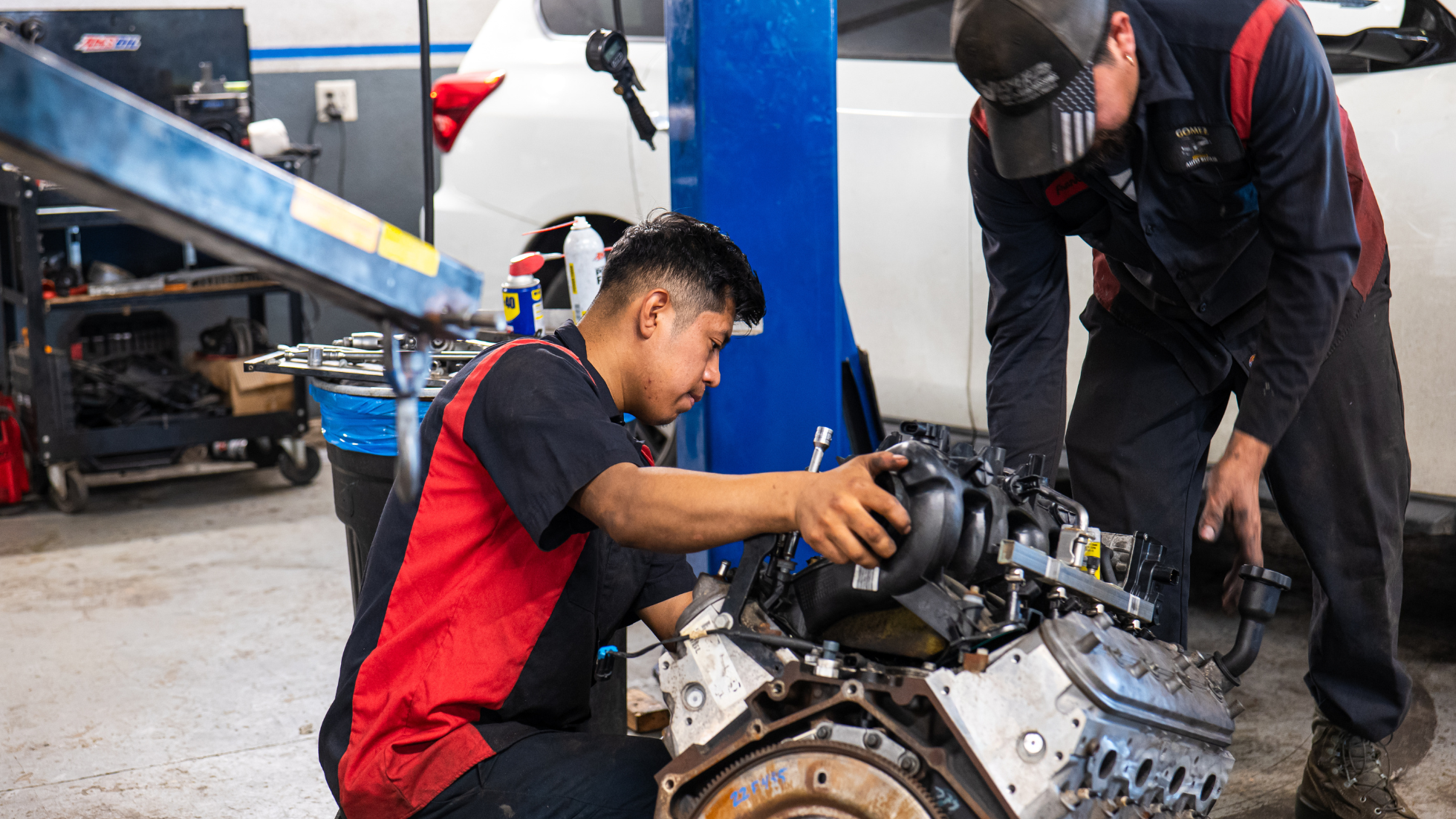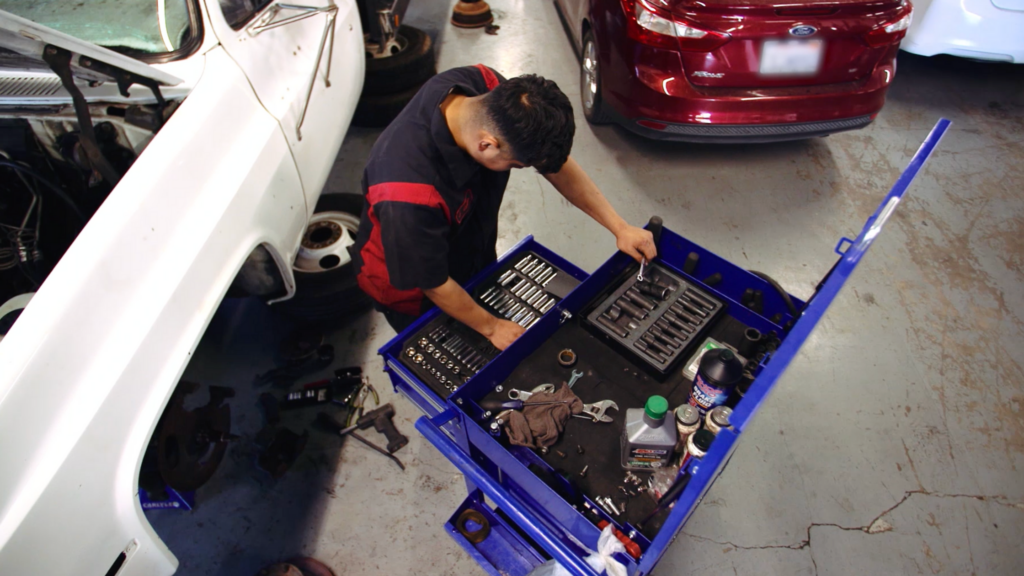
Running a successful auto repair shop requires efficient management of every nook and cranny of your operations. Without well-defined, repeatable processes, your business can easily become chaotic, leading to unhappy customers, frustrated employees, and lost revenue.
Regularly auditing your shop is crucial to identifying inefficiencies, inconsistencies, and gaps that frustrate customers and employees alike. Shops that excel continually refine their processes — creating consistent and efficient service for every customer and vehicle. Not only does this ensure customer satisfaction, but it also fosters a positive work environment that helps retain employees and increase revenue.
Is the Absence of Processes Taking a Toll on Your Shop?
Take a moment to be honest with yourself. Look at the bullets below and note if your shop is struggling with any of the things listed:
- Employees handle the same tasks differently
- Frequent miscommunication between staff
- Frequent miscommunication with customers
- Regular staff conflicts
- Customers often seem frustrated
- Negative customer reviews
- Low effective labor rate
- Low bay productivity levels
- High costs and low profitability
- Low staff morale and signs of burnout
- High employee turnover
- Frequent parts returns and warranty claims
- Overbooked or missed appointments
- Too many vehicles waiting on parts
If you’re struggling with any of these, you can create a healthier, more efficient, and profitable shop environment by addressing these issues through well-defined processes and systems.
The Power of Streamlined Process for EVERYTHING
Process creation is an investment of time, but the results are well worth it:
- Shop Efficiency: Clearly defined processes ensure each task, big or small, is completed efficiently and consistently.
- Consistency for Customers: A uniform service experience builds trust and customer satisfaction.
- Consistency for Employees: Every team member is set up for success, with the entire team on the same page.
- Profitability: Efficient processes minimize waste, maximize productivity, help retain staff, and create a place where customers want to come back — all aspects that impact profitability.
Shops that have worked hard on processes for their business can see the positive payoff:
“No one loves process, but everyone needs it. Discovering what processes are lacking, addressing them, and then standing by them takes immense effort. But process is what will give your guidance during the chaos. Learn to lean on the process.”
Lauralee Schmidt, COO, Schmidt Auto Care
Lauralee (Lola) Schmidt is the COO at Schmidt Auto Care. She witnessed firsthand the transformative power of implementing practical processes to turn a struggling business into a thriving, healthy business. Lola is passionate about inspiring other shop owners to establish smart, effective processes that will proactively keep you, and your team, free of chaos or decline.
(Learn more about processes from Lola at TOOLS 2024. See the details at the bottom of this post).
Developing Processes Takes Time (and That’s Okay)
Don’t feel pressured to tackle everything at once. Identify your shop’s most significant pain points, then focus on one or two processes at a time. Start small, build on the wins, and involve your team for maximum effectiveness.
Tips for Developing Processes
- Assess Existing Operations: Map out your current workflows and identify bottlenecks and inconsistencies.
- Consult Your Team: Involve employees in process creation for practical insights and buy-in.
- Survey Your Customers: Identify the top friction points that customers experience.
- Document Everything: Write out each step of the process to build standard operating procedures that can easily be shared with the team and updated as needed.
- Train & Review: Train your team on the new processes. Create consistent onboarding for all new employees to swiftly train them in all processes.
- Review and Modify: Regularly review processes and their effectiveness and update as necessary.
A Note About the Relationship Between Processes and Systems
As you read the checklist below, you’ll notice we call out a process and a system.
Processes are the specific steps involved in tasks or operations. Systems are the tools, software, or frameworks that support and enhance processes. Figuring out how to effectively combine processes with systems where applicable can transform the way your shop operates.
Top Areas of Auto Repair Shops that Need Processes (Audit Checklist)
Here’s a list of key operational areas every shop needs to streamline with a healthy process. Every shop is unique, so though we aimed to make this list as comprehensive as possible, some items may not apply to your unique shop, and others that are not on this list may need to be included. The goal is to help you critically examine your shop’s processes and set you on your way to healthy process creation.
Answering Phone Calls
Process Inspiration: Create a phone script with consistent greetings, responses to common customer inquiries, and guidelines for handling frustrated customers. Standardize how you handle calls from non-customers such as vendors and suppliers.
Potential System: Look into an automated phone system to reduce the need for staff to answer routine questions, like shop hours. The system can also direct callers to the right person faster through a menu of options — reducing hold times.
Appointment Scheduling and Reminders
Process Inspiration: Understand your shop’s appointment capacity to optimize productivity while avoiding underbooking, overbooking, and double booking. Allocate time for thorough vehicle inspections, ensure clear technician assignments, and establish a reminder system to minimize no-shows. Have a process to fill canceled appointments.
Potential System: Digital scheduling tools help prevent manual errors and oversight that can cause overbooking or missed appointments. They also offer automated reminders to reduce no-shows.
Tracking Customer and Vehicle Information
Process Inspiration: Consistently record and update customer and vehicle information and meticulously track service records. Use comprehensive records to personalize service, recommend maintenance, and improve communication.
Potential System: A customer management system streamlines data collection and keeps information accurate. It helps your team access and record essential details quickly.
Vehicle Inspections
Process Inspiration: Implement a structured inspection checklist to assess each vehicle thoroughly. Ensure technicians document findings, highlight urgent repairs, and identify maintenance opportunities. Share inspections with your customers; clear communication of results helps build customer trust. Thorough inspections also help protect you from customer disputes where customers believe your team caused damage to their vehicle that, in fact, was pre-existing.
Potential System: Digital inspection tools help standardize the process and enable technicians to record findings quickly and accurately with photos, videos, and notes. This not only speeds up thorough inspection but greatly enhances customer transparency and trust.
Estimate/RO Creation
Process Inspiration: Develop a standardized process for generating estimates accurately reflecting labor, parts, and recommended repairs. Ensure technicians provide thorough inspections, document findings clearly, and transparently communicate expected costs to customers to support everything on the estimate. If a customer defers a recommended service, make a note for future recommendations.
Potential System: Estimating software can significantly speed up and standardize the repair order creation process, helping your shop clearly communicate a price breakdown while reducing manual calculations and errors. Many also include canned jobs so that you can spin up an estimate for your most common services in a click instead of using staff time to create the same common estimates from scratch over and over.
Upselling & Cross-Selling Services
Process Inspiration: Train your staff to recognize opportunities for upselling and cross-selling services based on customer needs and vehicle history so that your shop never misses out on an opportunity to increase ARO. Standardize how recommendations of additional services are made to customers and ensure staff is confident in how to gracefully upsell and cross-sell services without losing customer trust.
Potential Systems: There are a few systems that can help with cross-selling and upselling. Customer management software tracks service history, and some can track deferred services that can be mentioned next time the customer comes in. Digital vehicle inspections also greatly help customers easily get on board with approving additional services when they can see with their own eyes why the recommendation was made.
Ordering Parts
Process Inspiration: Establish a streamlined process for parts procurement to quickly identify and order the correct parts. Know your go-to suppliers, preferred brands, and cost preferences.
Potential System: Integrate with an online parts ordering platform like PartsTech so that you can search and order from all of your suppliers in one lookup. You’ll reduce time on the phone calling suppliers with the ability to see real-time pricing and availability across all your suppliers, add what you need to the cart, and order in a click. The ability to search for parts via interactive full-vehicle diagrams will increate parts ordering accuracy and reduce part returns.
Parts and Labor Markup
Process Inspiration: Develop a consistent pricing strategy for parts and labor, ensuring that markups align with your shop’s profitability goals. Train staff to communicate the value of these markups clearly and effectively to customers. Create processes for when staff should and shouldn’t discount.
Potential System: Implement pricing matrices to automate parts and labor markups. Matrices help maintain consistent margins, optimize profitability, and reduce manual pricing errors.
Service Execution
Process Inspiration: (This could honestly be a separate list in and of itself so take that time to audit how a vehicle progresses through your shop during service execution). Develop a very clear workflow for technicians to perform repairs and maintenance. Ensure vehicles are clearly assigned and the work to be done is clearly documented for the technician. Create a process for the technicians to communicate with the team about delays, additional findings, or required adjustments.
Potential System: Utilize a shop management system with workflow management. This helps technicians follow the same workflow efficiently, track progress, update documentation, and communicate real-time changes. It also allows anyone in the shop to quickly see the status of a vehicle, even if the technician is on their lunch break.
Customer Communication During Service
Process Inspiration: Keeping customers informed builds trust and alleviates anxiety during the service process. Develop a proactive communication process to keep customers informed while servicing their vehicles. Provide regular updates on progress, unexpected findings, or delays, and ensure customers can easily reach staff with questions and that your staff responds within a specified amount of time.
Potential System: Use automated messaging software to send real-time status updates and notify customers of changes. This reduces incoming calls from customers inquiring about vehicle status and allows for quick approval of additional repairs.
Invoicing & Payment
Process Inspiration: Develop a straightforward process for generating accurate invoices that outline parts, labor, and additional services. Ensure invoices are itemized, easy to understand, and presented promptly upon service completion. Offer multiple payment options to accommodate customer preferences.
Potential System: Invoicing software helps generate accurate, itemized invoices. Those built into auto shop management systems typically let you convert an estimate to an invoice with a click. Use a payment system that offers customers multiple ways to pay, especially the option to pay online.
Vehicle Checkout
Process Inspiration: Establish a standardized and streamlined vehicle checkout process that ensures customers understand the services performed, costs, and future maintenance recommendations. Ensure a smooth and quick checkout and confirm customer satisfaction. Provide flexible options like after-hours pickups for added convenience.
Potential System: Use a shop management system that organizes service records, invoices, and maintenance recommendations, enabling staff to quickly review completed repairs, address customer queries, and arrange follow-up appointments. Offer after-hours pickup solutions, such as secure lock boxes.
Parts Inventory
Process Inspiration: Develop a structured approach to inventory management, ensuring accurate stock levels and eliminating obsolete parts. Regularly audit inventory to align with repair needs and identify gaps.
Potential System: Look into an inventory management system to track parts usage and set up automated alerts for low stock.
Staff Scheduling
Process Inspiration: Create a transparent staff scheduling process that considers technician availability, skill sets, and your shop’s workload. Ensure schedules are clear and flexible and allow sufficient time for breaks to maintain productivity and morale.
Potential System: Use scheduling software to organize shifts, balance workloads, minimize conflicts, keep staff informed, and allow for swift adjustments in response to unexpected workload or staffing needs changes.
Equipment Care
Process Inspiration: Develop a routine maintenance schedule for all shop equipment to ensure optimal performance and longevity. Train staff to follow safety protocols, conduct regular checks, and promptly report issues for repair or replacement.
Potential System: Use your shop calendar to schedule recurring, dedicated time to check your shop’s equipment on a regular basis.
Asking for and Responding to Customer Reviews
Process Inspiration: Develop a structured approach to requesting customer reviews, especially from satisfied clients. Promptly acknowledge all reviews, thank customers for positive feedback, and respond professionally to negative reviews, addressing concerns and outlining improvements or solutions.
Potential System: Utilize reputation management software that automates review requests after service, making it easy for customers to provide feedback. This system can aggregate reviews across platforms, allowing you to monitor your reputation effectively. Automated notifications help ensure prompt responses to positive and negative reviews, demonstrating customer care and fostering trust while refining your shop’s services.
If you are attending TOOLS 2024, don’t miss Lola Schmidt’s seminar, “The Power of Policies and Procedures.”

We spoke with Lola Schmidt (quoted above) who has seen the power of processes in her shop. If you will be at TOOLS 2024, we encourage you to attend her session to learn from her experience and expertise on the need for processes in auto every auto repair shop.
Session Description:
Often, business owners sit around and dream up big ideas but have no real direction for building or developing the plans needed to protect the day-to-day business flow. Let’s take a look at those ideas and turn them into policies and procedures that give solid definition and direction to your business. It’s easy to go astray and get lost in the day-to-day business, but feeling confident about exercising solid policies will help drive success.
(Lola’s session is taking place on Saturday, June 1st, 2024 at TOOLS 2024)
Helpful, Related Resources
- 8 Tips for Auto Shops to Reduce Phone Time
- Appointment Scheduling Tools for Auto Repair Shops – The Benefits
- How to Text Your Auto Repair Shop Customers
- Vehicle Inspection Checklist for Auto Shops
- How to Speed Up Vehicle Inspection Times – A Guide
- Free Parts Markup Guide
- How to Streamline Your Auto Shop’s Checkout Process



